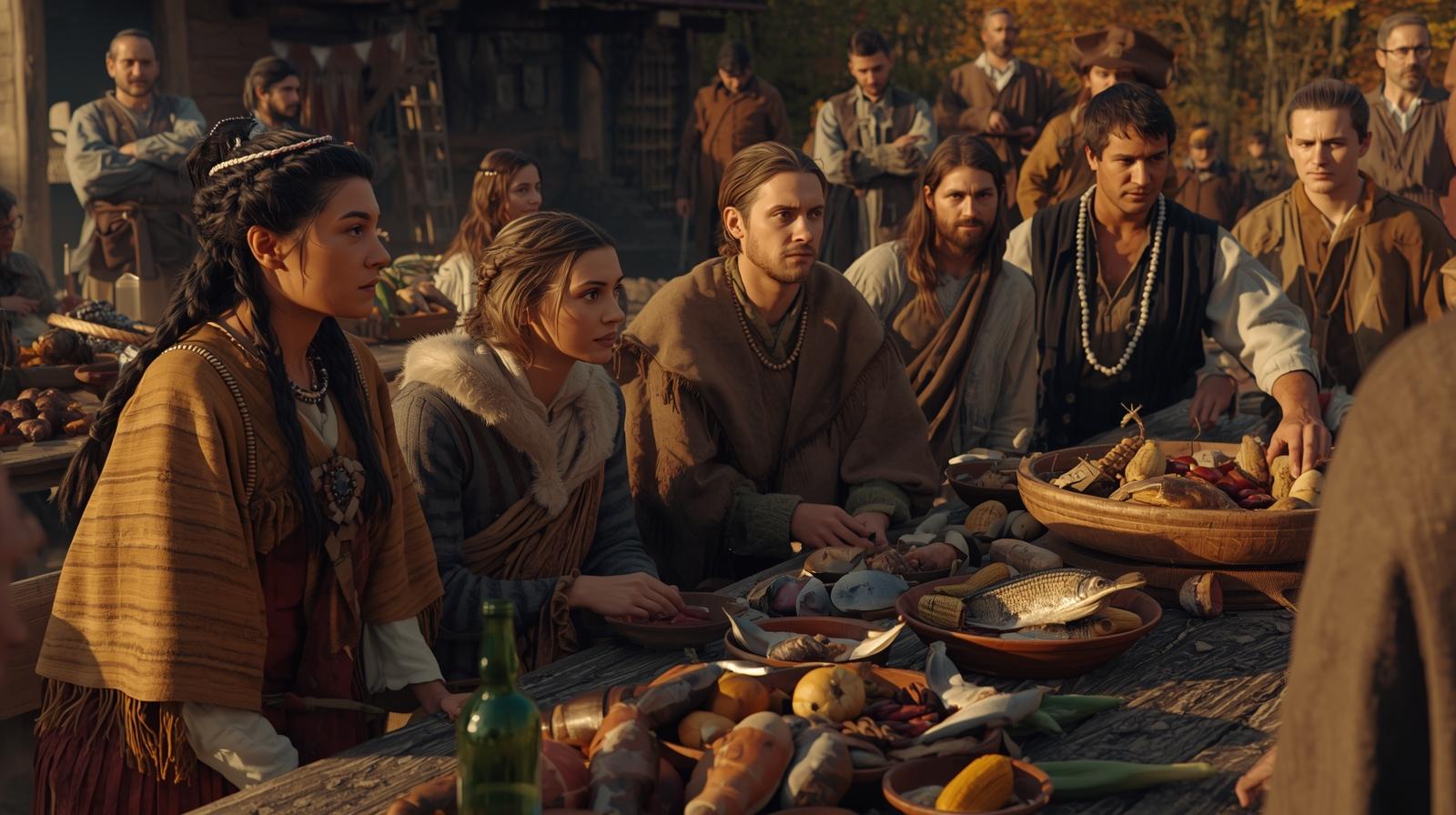
Forget the Construction Paper Hats — Here’s What Really Happened in 1621
We all grew up with the same bright-colored classroom myth: Pilgrims in buckle shoes, Native Americans in feathers, long tables filled with pumpkin pie, mashed potatoes, and smiling hand-holding “friends.” Cute, but not even close to accurate. The real story behind the First Thanksgiving is way more complex, deeply political, and honestly way more fascinating.
Who Was Actually There?
In the fall of 1621, about 50 surviving English colonists (out of the original 102 who arrived on the Mayflower) gathered with around 90 Wampanoag men from the surrounding tribal communities. These Native men were not “visitors” — they were strategic allies of the Pilgrims, led by the respected sachem (leader) Massasoit.
This wasn’t just a friendly dinner. This was a political event, more like a diplomatic gathering meant to secure peace, protection, and negotiation between the struggling English settlement and the powerful Wampanoag Nation.
It Wasn’t Even Called “Thanksgiving”
Colonists did hold religious “Thanksgiving” services — but those involved prayer, fasting, and zero feasting. The 1621 event was a harvest celebration, not a Thanksgiving at all. It was simply a successful crop party, celebrating the fact that the colonists had finally grown enough food to survive the winter — thanks mainly to Native knowledge of planting, harvesting, and land management.
What Did They Eat? (Hint: No Pumpkin Pie & No Mashed Potatoes)
Let’s clear this up right now:
❌ No pumpkin pie (they had pumpkins, but no flour, sugar, or ovens)
❌ No mashed potatoes (potatoes weren’t in North America yet)
❌ No cranberry sauce (they had cranberries but no sugar)
❌ No stuffing, no green bean casserole, and definitely no cornbread
Historians believe the menu looked more like this:
- Wild fowl — likely duck, goose, and possibly turkey
- Venison — the Wampanoag brought five deer as gifts
- Eels and shellfish — mussels, clams, oysters, and lobster were everywhere
- Roasted corn — but not sweet corn, more like cornmeal or porridge
- Nuts, beans, and squash — thanks to Native agricultural expertise
- Berries and foraged herbs
This was a meal cooked over open fires, flavored with wild herbs and onions, not butter and brown sugar.
What They Wore (Yep, the Buckles Are a Myth Too)
Those shiny buckles we always see on Pilgrims’ hats? Pure fiction — buckles were expensive and not fashionable in 1621. Pilgrims wore earth-tone clothing: browns, greens, and grays, made from wool and linen. Native clothing was just as practical — deerskin, fur-lined cloaks, and beautifully decorated accessories.
Why Did It Happen?
The Wampanoag weren’t invited just to feast — their presence was political. The English desperately needed allies for survival and protection. The Wampanoag were dealing with enemy tribes and saw value in cooperation. This was a diplomatic gathering — a cross-cultural negotiation sealed through feasting.
The Hard Truth: That Peace Didn’t Last
While the 1621 feast is often celebrated as a symbol of unity, the harmony was temporary. Within just a generation, land disputes, cultural conflict, and broken agreements led to devastating wars and the eventual displacement of Native peoples throughout New England.
So… Should We Still Celebrate Thanksgiving?
Absolutely — but with a deeper understanding. Thanksgiving can still be about gathering, gratitude, and tradition, but it’s also an opportunity to honor the Indigenous cultures that shaped the America we live in today — long before the Mayflower ever set sail.
Final Thoughts
The real story behind the First Thanksgiving is less about turkey and more about survival, political alliances, and two vastly different cultures trying to navigate a new world together.
Lisa Crow contributed to this article. She is a true crime junkie and lifestyle blogger based in Waco, Texas. Lisa is the Head of Content at Gigi’s Ramblings and Southern Bred True Crime Junkie. She spends her free time traveling when she can and making memories with her large family which consists of six children and fifteen grandchildren.